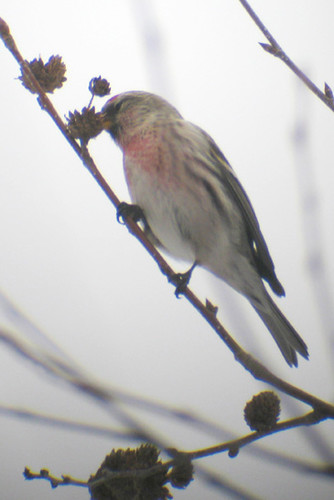 |
| Occurrence of Common Redpoll in Vermont from 2002-12 based on Christmas Bird Count data. |
Predicting the future isn’t easy. Crystal balls are unreliable
and tarot cards can seem uselessly ambiguous. Weather forecasts do pretty well,
but even with multimillion dollar radar equipment, they have their margin of
error. Look at a graph of occurrence for Common Redpoll, and it can seem as
random as flipping a coin. So how can one person accurately predict which
northern-breeding birds will travel south, months in advance? Ron Pittaway has
figured out.
Ron Pittaway is a prominent ornithologist in Ontario who
began producing his famous ‘winter finch forecast’ over a decade ago. His
forecast addresses ‘irruptive’ species of birds. These species are cold-hardy,
and if they had it their way, would stay in the far north all winter long. But,
in some years when food is scarce, they are forced to move south. Ron Pittaway
predicts the movements of these birds by collating data on the seed crops of
trees in the far north each year.
 |
| A Common Redpoll feeds in a birch |
For example, Ron predicts a decent number Common Redpolls to
move south this winter, because, “birch seed crops are variably poor to average
in the boreal forest.” Redpolls like birch seeds, and without birch seeds in
the boreal forest, the redpolls will move south. His forecasts not only predict
which birds will come south with pretty good accuracy, they also give a glimpse
into the life histories of these birds and how/where to observe them.
I, like many birders, eagerly await the winter finch forecast
each year. As thousands of breeding songbirds disappear from Vermont each fall,
it gives me something to look forward to in the winter to come.
No comments:
Post a Comment